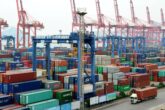January 01, 2018
US Alliances and Trump’s ‘Free and Open Indo-Pacific’ Policy
Any single year’s events can mask the true direction of longer-term trends. Time will tell, but I believe this is the case with respect to US policy toward the Asia-Pacific region during 2017. Undeniably, the year has seen momentum swings, nuclear danger and heightened uncertainty. But for all the disruption, the fundamental US commitment to regional allies is steadfast. Further, President Donald Trump’s November trip to Asia shows that he intends to build on the agenda of his predecessor by forging new and stronger partnerships in pursuit of a free and open Indo-Pacific region.
Five Geopolitical Challenges
The world is beset with grave international security challenges. Despite this trend — indeed, because of it — alliances are rising in value. Resurgent major-power competition, combined with upstart regional actors and persistent transnational terrorism, create the impression that America’s relative military and economic power is in rapid decline. Although I would argue that perceptions can deceive (America remains strong), the salient point is that the US cannot and need not face these challenges alone. Fortunately, it possesses something no other power or group can claim: an extensive array of capable, committed allies and partners with a variety of overlapping interests and values. The Trump administration is acutely aware of this fact, even as it presses allies into sharing risks and burdens hitherto unknown.
Before turning to the alliances in Asia, it is worthwhile considering the major challenges that US foreign policy faces globally: a fragmenting rules-based order; the rise of Asia (including, but not limited to, China’s re-emergence as a great power); new questions relating to the reliability of the US; mounting global challenges; and problems of governance that spill over into neighboring states and regions.
Read the full commentary in Global Asia.
More from CNAS
-
Global Leaders Condemn Pahalgam Terror Attack
In the wake of the Pahalgam terror attacks, global leaders, including Trump and Macron, condemned the violence and expressed solidarity with India. As calls for justice grow, ...
By Lisa Curtis
-
Ziemba: Struck By Energy Deal Between India & Saudi Arabia
Saudi Arabia and India have agreed to deepen energy ties and cooperate more closely on tourism and technology as the countries seek to strengthen relations at a time of turbul...
By Rachel Ziemba
-
Trump’s Crackdown on Foreign Students Is a Gift to China
When top global talent no longer sees America as a stable, long-term bet — in light of both visa and research funding insecurity — many will vote with their feet....
By Jordan Schneider
-
Trump Administration Realises That The Tariff Strategy Has Backfired: Lisa Curtis
Trump administration realises that the tariff strategy has backfired, says Lisa Curtis, senior fellow and program director at the Center for a New American Security.Watch the ...
By Lisa Curtis




